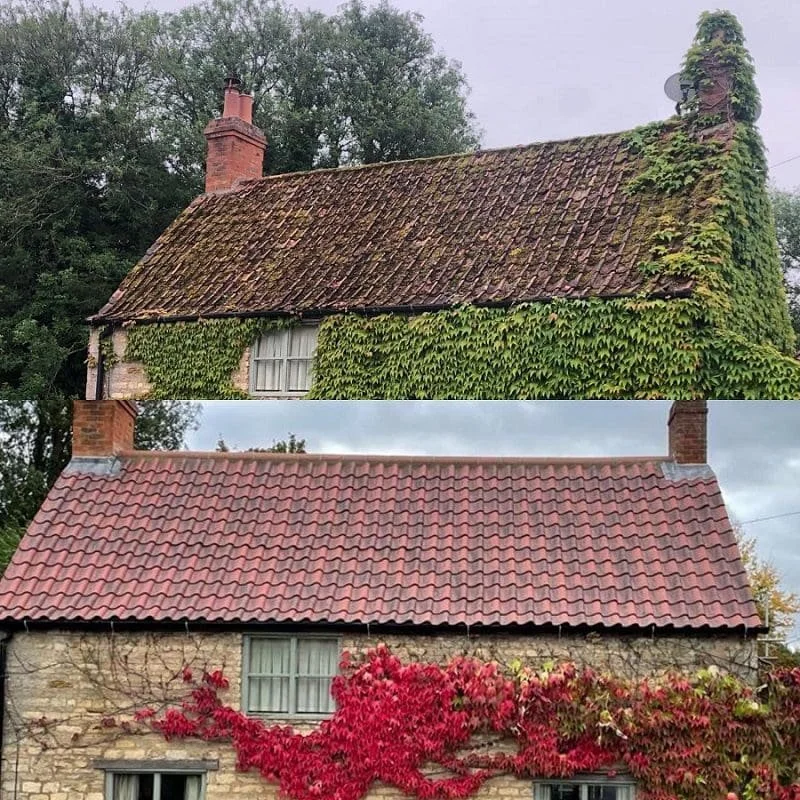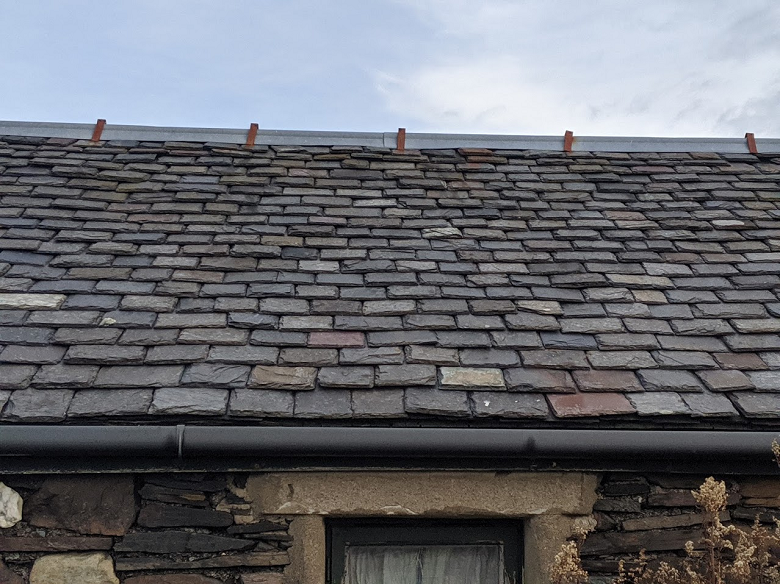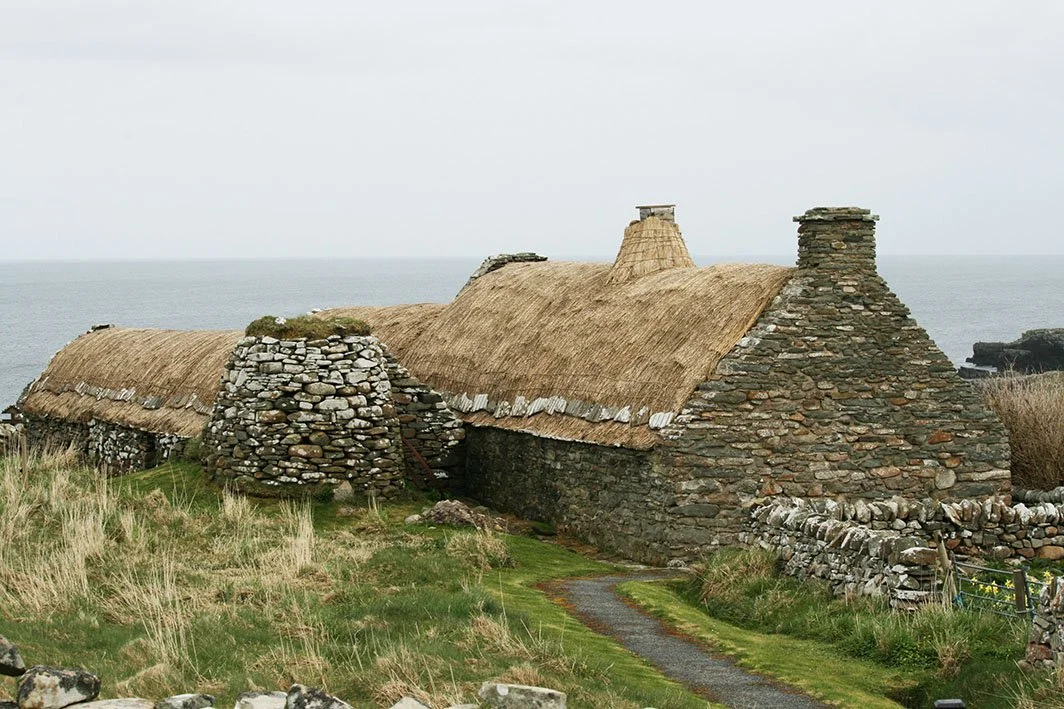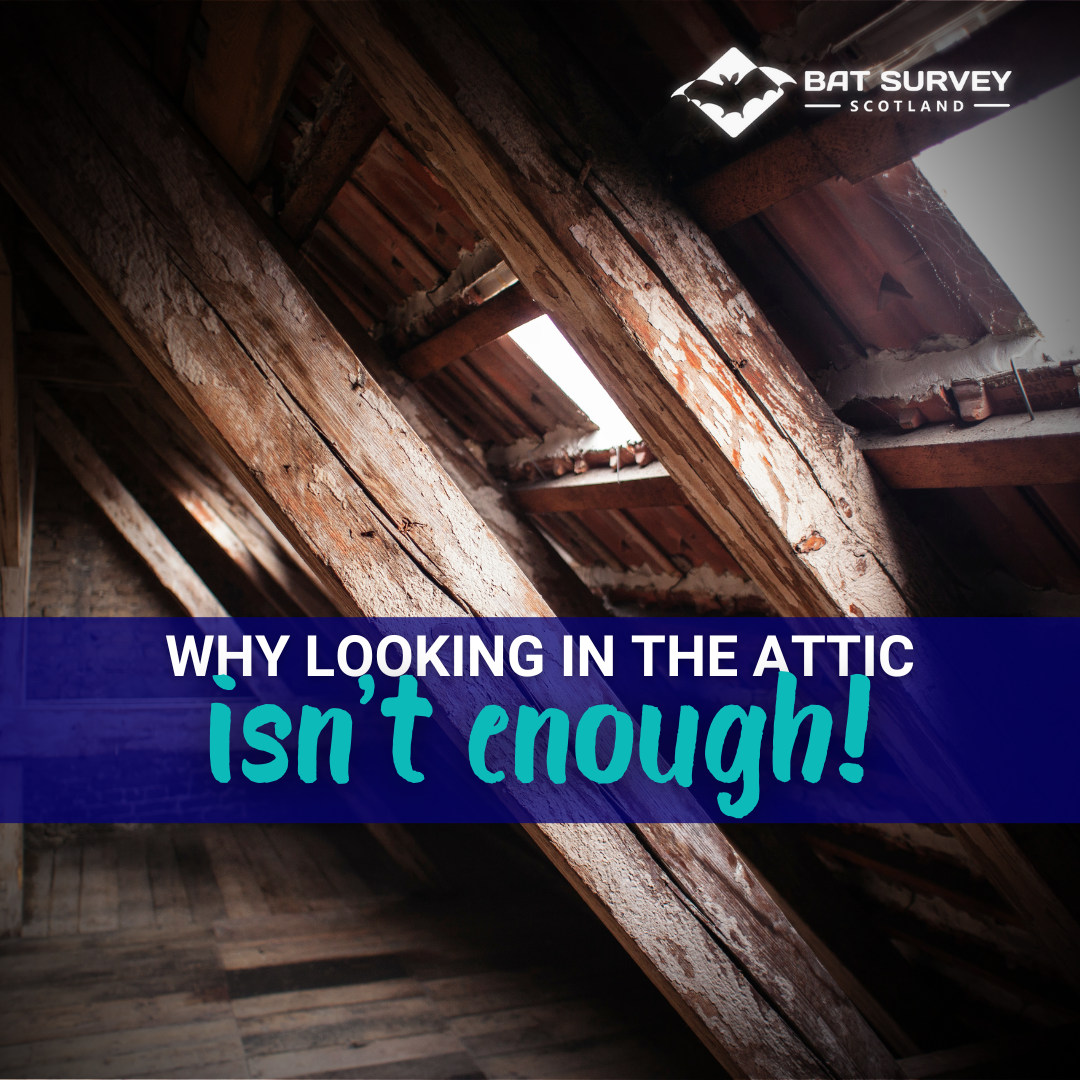Bats and Scottish Architecture
Just as you can tell the difference between an Aberdonian street and one from the Scottish Borders, so do Scottish bats! The differences in materials, building techniques and structural features across Scotland have a considerable influence on the roosting opportunities for bats. While your house may break the regional mould, here are some trends we’ve spotted across Scotland and how they impact if bats will roost in your property…
Clay Pantiles | East Lothian and East Fife
Rather than traditional slate roofing, pantiles are used in East Lothian and East Fife. Ships arriving from the Low Countries would often bring clay tiles as ballast, so pantile rooves became a practical and affordable option in coastal areas of Scotland. Pantiles are typically laid with little to no sarking (a layer of material under the tiles) and are relatively loose compared to slate roofing. As a result, they can be draughty and less insulated than other roofing materials.
The draughts and greater temperature fluctuations mean these are generally unsuitable for crevice-roosting bats (who prefer more stable environments). Occasionally, a bat roost may still be found so buildings with pantile roofing will still need to contact an ecologist to be sure!
Sarked Slate Roofs | Highlands and Islands
In the north and west of Scotland and the Highlands and Islands, slate roofs with sarking (an underlayer of boards or felt) are common. These are well seals with stable internal conditions that protect against both moisture and fluctuations in temperature.
The stable conditions in a sarked slate roof create ideal opportunities for crevice roosting bats (like Common and Soprano Pipistrelles). The additional insulation from the sarking can create ideal conditions for maternity roosts, which require stable, warm temperatures to support fast growing pups.
Stone Buildings with Thick Walls | Central and northern Scotland
Many traditional Scottish buildings are constructed from thick stone, often granite or sandstone, creating stable temperatures due to the mass of stone within the walls. This is especially prominent in rural areas, or in Aberdeenshire with a high proportion of buildings made from granite.
Buildings with accessible eaves or gaps in the stonework can provide excellent roosting spots, and may even be used as hibernacula. During hibernation, bats require stable, cool environments, and big stone walls provide exactly that!
Turf Roofs and Traditional Bothies | Remote Highlands and Islands
Traditional crofting cottages and bothies may still have turf roofs, with grass or moss growing on the surface, or thatch in some island regions.
While turf provides natural insulation and supports microhabitats ideal for insects (bats food source) they are less appealing to many of our most common bat species. The lack of internal spaces means a lack of crevices for pipistrelles, but the stonework around them may provide plenty of opportunities.
Each building will have a range of features with different potential for bat roosts, so if you have a turf or thatch roof it’s still worth getting in touch if you’re planning works that require ecological surveys!
Tower Houses and Castles | Historic Sites Across Scotland
The unique architectural elements of historic castles, tower houses, and estate buildings are rife with bat-suitable features. Found across Scotland, they provide complex attics, crevices, and voids suitable for a range of our resident bat species. From a complex attic perfect for a Brown Long Eared bat summer roost, to a cool damp cellar ideal for hibernation, these buildings often have a high suitability for roosting bats - meaning survey efforts can take over 6 weeks in summer.
If you are planning work on a historic building, reach out to us when you start planning any other required consents. It’s important to make sure time sensitive surveys are scheduled in advance so your project runs on time!
Varying Urban Features | Edinburgh, glasgow and other Cities & Towns
Urban areas in Scotland often feature dense, older buildings with diverse roof types, loft spaces and ventilation systems. For example, Edinburgh’s Old Town has tightly packed stone tenements with lofts and a range of hidden spaces and voids. Newer Victorian sandstone terraces often have narrow gaps in their masonry, providing similarly bat-suitable crevices!
What Does this Mean For You?
While there are trends in where bats roost, we often remind our clients that bats rarely read the textbooks!
If you think you may need a bat survey, it’s far safer and cost-effective to reach out to us early on in your project planning. You can contact our specialist team for no-obligation quotes or advice here.
As for a quick summary…
Climate stability plays a significant role in roost selection. Sarked slate and thick stone walls provide more stable environments and are more likely to be home to bats.
Roost friendly features vary with building types, but no age or style of building is off limits. The unique construction of your home, the surrounding habitat, and your location within Scotland will all influence if bats are roosting in your property!
If you need a bat survey (or think you might) get in touch with our team of specialist ecologists!
Or read more of our latest blogs:









